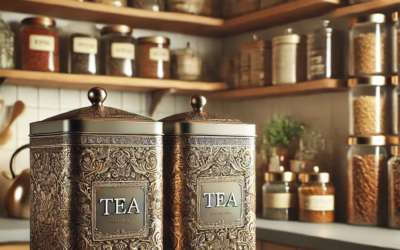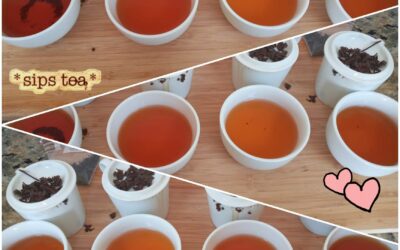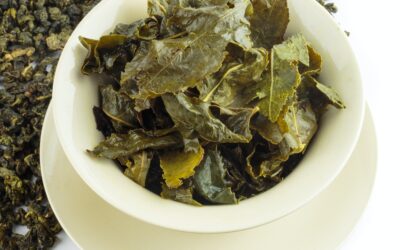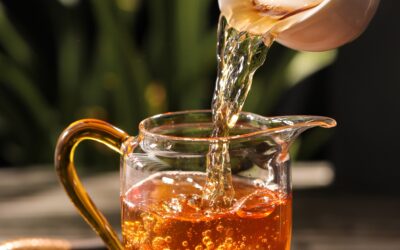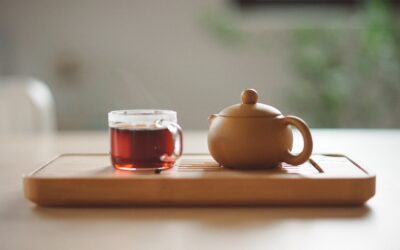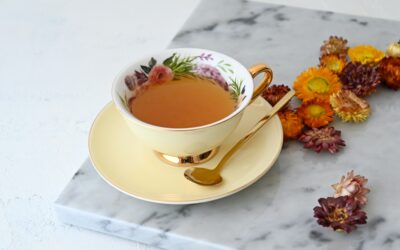In the wide world of tea, there is often confusion around the terms blended, flavored, and scented. These labels are frequently used interchangeably, but they represent different processes, philosophies, and sensory experiences.
This guide is designed to bring clarity so you can make more conscious, informed choices the next time you shop for tea.
What Exactly Is a “Blend”?
The word blend is one of the most commonly used and misunderstood terms in the tea industry. Here’s where things get interesting.
Blending is a widespread industry practice, especially among large-scale tea companies. Why? Because tea is an agricultural product, and like wine, its flavor can vary wildly based on rainfall, soil conditions, altitude, and other growing variables.
By blending teas from different gardens or harvests, manufacturers can produce a consistent, homogeneous product year after year. This is why your favorite supermarket tea bag tastes exactly the same every single time……consistency becomes their signature.
But blending isn’t only about standardization. It’s also a tool for creating flavors that no single estate tea could offer alone.
Take English Breakfast, for example. This full-bodied classic often combines three different black teas: a malty Assam from India, a brisk Ceylon from Sri Lanka, and a smoky Keemun from China. Alone, each tea offers something unique. Together, they form the signature flavor that many tea lovers seek in a breakfast cup.
There’s another kind of blending which includes adding botanicals, herbs, spices, or flowers to a base tea (black, green, white etc.). This is where artistry enters, crafting a blend that appeals not just to the taste but also to aroma, mouthfeel, and mood. Think green tea with rose petals, oolong with dried mango and safflower, or black tea with hibiscus and ginger.
And finally, there are blends with no Camellia sinensis at all. These are herbal blends, aka tisanes, a combination of dried herbs, flowers, roots, spices, and fruits. They’re technically not “tea” in the traditional sense, but they’ve become a beloved category all their own for wellness, relaxation, or simple indulgence.
Scented Teas vs Flavored Teas: What’s the Difference in Quality and Craft?
Flavored teas are created by adding flavoring agents (like extracts, essential oils, or natural/ artificial flavors) directly onto the tea leaves.
This method is scalable and efficient. It allows producers to introduce bold, imaginative profiles that stand out on shelves and suit mainstream tastes. Think fruity infusions, dessert-inspired teas, or tropical blends.
A common example is pumpkin spice, typically a black tea base infused with notes of cinnamon, clove, nutmeg, and sometimes vanilla. These flavors are achieved through added agents, not through whole ingredients.
While flavored teas can be fun and innovative, they often mask the character of the base tea. In many cases, the tea used isn’t of premium quality, because the added flavoring does most of the work.
Scented Teas: A More Subtle, Labor-Intensive Art
Scented teas, on the other hand, draw their aromatic profile from being naturally exposed to scent sources, whether floral, fruity, smoky, or even environmental.
This process can involve layering tea leaves with jasmine blossoms or citrus peels so the tea slowly absorbs their scent over time. A classic example is Buddha’s Tears, where jasmine flowers are repeatedly layered with tea leaves for several days before being removed, leaving a delicate, complex fragrance. Or Earl Grey where the black tea leaves are scented with actual bergamot rind
But scenting isn’t limited to botanicals. Some teas are scented through smoke or roasting techniques, like Lapsang Souchong, which is smoke-dried over pinewood fires, or Jin Xuan Charcoal Oolong (Charcoal Light Roast), where the scent and flavor come from the traditional roasting process itself.
Scented teas require more time, care, and craftsmanship. The result is often a more elegant and authentic cup, where the tea and scent are in harmony rather than in competition.
In Summary……….
- Blended teas = more than one ingredient combined
- Flavored teas = additives (natural or artificial) applied to tea leaves
- Scented teas = aroma infused through exposure to botanicals, smoke, or roasting
Understanding these categories can help you better appreciate what you’re drinking and choose teas that align with your preferences, whether you want a bold flavored experience or the unaltered character of a single-origin leaf.
At Cosmo Tea & Tea, the traditional, more respectful approach to tea is one we admire. When we source scented teas, we do so deliberately, choosing partners who honor time-tested practices rather than shortcuts.
For us, transparency matters. That’s why we don’t acquire pre-flavored teas or anonymous “blends” with unclear origins. Our focus is on premium, whole-leaf teas where the integrity of the leaf is respected.
Whenever we craft a blend, it’s done in-house, thoughtfully, so we know exactly what goes into your cup. And when we choose a scented tea, we ensure it’s one where care, not chemicals, shapes the final experience.
Because we believe tea should taste like tea, with stories, not just strong flavor.


